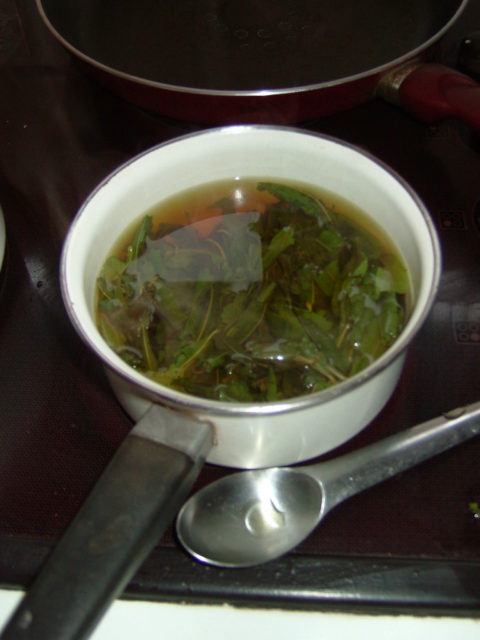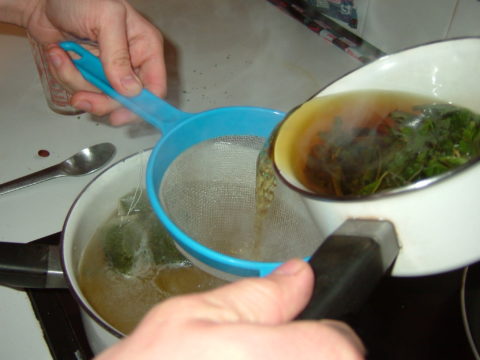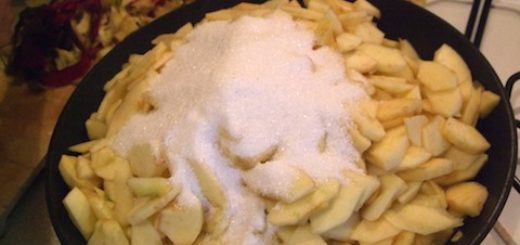Verveine sorbet
Our first sorbet « Made in France » had to be a typically French one. We therefore tried to make one with the famous plant that grows in our region: the “Verveineâ€.

This plant is normally used to make liqueur, or herbal teas, but you can sometimes be served one of these sorbets in a restaurant. Pour a few drops of liqueur on it, it’s wonderful!
Anyway, after hesitating between fresh and dried verveine, we opted for the dried one. Just like tea, the flavour of the plant seems to be best obtained with dried leaves infused in hot water.
We plunged two big handfuls of dried leaves into 500mL of very hot water and let it infuse for 10 minutes. In another pan, we prepared the sugar syrup, with 1 litre of water and 1 kg of sugar. Sweet! While bringing this to slow heat, we added 3 herbal tea bags to the liquid and let the whole infuse. Eventually, we mixed the two liquids, and added the juice of one big lemon.

I need to say that it was my father’s first ice cream party, and he enjoyed taking part in the cranking!

The cranking was really long, and I was a bit afraid of the result, but “thou shalt never doubt the power of the machine!†(Peter, 3:14)… First of all, the colour was amazing: from a pale yellow liquid, the mix turned into an immaculate white sorbet! And the flavour was intense, the acidity well balanced. We enjoyed this ice cream by the fireplace, with my father… A quiet and enjoyable moment! The next step is to serve this with lentil biscuits!

Note: we have to say that, working without a saccharometer, the result was a bit too sweet; but we did another batch the day after, with only 750g of sugar, and this time the result was purely perfect!





Sounds superbly delicious!
Not surprised 1kg of sugar was too sweet, as I normally end up with around 500g (give or take 50g) of sugar in a sorbet in the half gallon White Mountain.
I’ll look forward to tasting some next month!
Thibault – a true pioneer, leading the way to herbaceous sorbets. I’d have loved to try this.
I think verveine runs in Thiabault’s veins. Shortly after I first met Thibault he invited me to taste an intense (and highly alcoholic) verveine spirit he had brought from France. My imagination raced to think of the illicit stills in the backwoods around Le Puy manufacturing this incredible spirit – luscious, viscous (just generally -ous) and a kind of olive green reminiscent of army uniforms. The flavour? herbal, verdant, slightly reminiscent of camomile and importantly not too sweet. This later point betrayed its purveyor as a true gastronome – I could tell we were going to get on well.
Could this flavour translate into sorbet? I sure with Thibault at the crank it must have been a great success. Ride on brother!
PS for any anglophones verveine is also known as verbena
I hate to be pedantic about this (well no I don’t really!) but in case you(Big D) are misleading anyone out there, can I just point out that verveine is actually LEMON verbena aka Aloysia triphylla or Verbena triphylla, not to be confused with the Verbena bonariensis and other herbaceous perennials widely found in the UK which probably don’t make great eating.
PS love the site, imaginative, witty and mouthwatering!